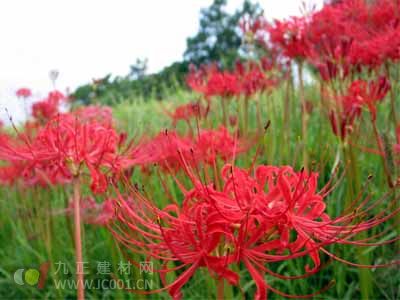Cultivation: Lycoris can be grown in open fields, potted indoors, or cultivated in boxes and hydroponic systems. It is a versatile plant that adapts well to various growing conditions. Best Cultivation Time: In Shanghai, the ideal planting period runs from May to November. This timeframe allows for proper growth and flowering control. Avoid transplanting during winter or early spring when the leaves are long. In colder regions, it’s best to plant in spring. Most varieties thrive in warm climates with maximum temperatures below 30°C and an average daily temperature of around 24°C. Lycoris can tolerate winter temperatures as low as 1°C, as long as the average daily temperature stays above 8°C. Optimal Growing Environment: When planting, ensure the bulb is not buried too deep—only the top of the bulb should be covered with soil. Use well-drained, slightly acidic sandy soil or loose potting mix. Apply a balanced base fertilizer before planting and water thoroughly. Keep the soil consistently moist during the vegetative growth phase, but avoid waterlogging to prevent bulb rot. From 20 days before flowering until the blooming stage, maintain adequate moisture to encourage even flowering and extend the bloom period. Planting Methods: In the Shanghai area, Lycoris can be grown directly in the field. Small bulbs around the main bulb can be separated for propagation. Trim and dry the main bulb roots for two days before planting. Ensure the planting site is elevated and well-drained; if not, create raised beds to prevent water damage. Plant at a spacing of 15cm x 20cm, leaving the top of the bulb exposed. Fertilize 2–4 times per year: first after leaf drop and before flowering using organic or compound fertilizers. For cut flowers, apply fertilizer when buds begin to form. A second application is recommended just before the late October to early November flowering season. After harvesting, continue watering but reduce nitrogen and increase phosphorus and potassium to strengthen the bulbs. In autumn, stop fertilizing and watering to help the plant enter dormancy. Dig up the bulbs on a sunny day when the soil is dry, clean them, and store after drying. Alternatively, cut the leaves and place the bulbs in a greenhouse with a temperature between 5°C and 10°C, ensuring good air circulation and dry conditions to prevent rot. Another effective method is using a 40cm × 60cm frame system, typically containing 16 bulbs per basket. This approach makes transplanting and maintenance easier. Weeding is essential in production; herbicides can be applied after the leaves have fallen or post-harvest when weeds are longer. Potted cultivation is also popular. Large bulbs that have grown in the field for three years and measure at least 7 cm in diameter can be planted in one pot or grouped in larger pots. Plant shallowly, so that one-third to half of the bulb remains above the soil surface. Water once after planting, keeping the soil slightly moist. Then, water again when new leaves appear. Apply liquid fertilizer every two weeks. Stop watering when the leaves become thick and mature in autumn. After germination in February or March, rotate the pot or repot with fresh soil. The ideal potting mix consists of 2 parts peat, 2 parts garden soil, and 1 part perlite, with a small amount of base fertilizer added. During summer dormancy, reduce watering, and keep the soil moist in spring and autumn. Apply a diluted fertilizer every two weeks during the growing season. Lycoris prefers partial shade, especially in summer, and thrives in semi-shaded conditions in spring and autumn. In winter, strictly limit watering and stop fertilizing to support dormancy. Bestware Touch Free Faucet brings the fine design and high technology together in all areas of the product process beyond Pull Out Faucet , Commercial Faucet and Commercial Kitchen Faucet. With extensive range of components, we can offer a large selection of both standard Pre-rinse Faucet and custom Basin Tap units as well as flexible combination. Stainless steel is 100% recyclable and is comprised of over 60% recycled material, Bestware faucets are the perfect solution in the commercial and industry for better water quality and the circumvention of the development of deleterious substances and bacteria. No plating, no oxidizing, no rust, lead free. Touch Free Faucet,Pre Rinse Faucet,Pull Out Kitchen Faucet,Pull Out Tap Bestware Hardware Production Co., Ltd. , https://www.bestwaremfg.com